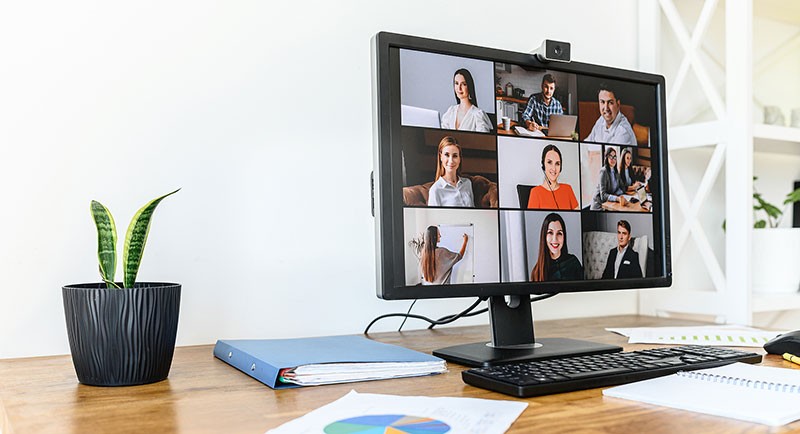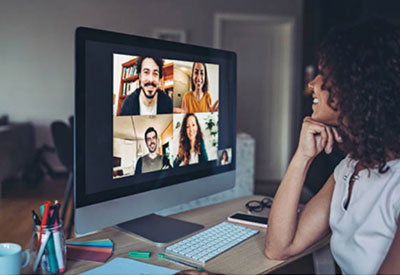News
Keep up to date with our latest projects and reports
Virtually POSSIBLE: Tips for Remote Research
As a result of the COVID-19 pandemic, qualitative research projects have shifted from in-person to virtual settings to reduce risk and protect participants. At L&M Policy Research (L&M), our team has conducted 100 percent of our qualitative research remotely, with over 270 participants, since March 2020.
We have learned some valuable lessons and are pleased to share our top 3 tips:
1. Prepare, prepare, prepare.
2. Create and maintain human connections.
Tip #1: Prepare, prepare, prepare.
Frontloading your preparation saves precious time with your participant pool. Whether it's an online focus group, in-depth interview or dyad, conduct a live technology check in advance. Don't wait until right before the group to discover their, or your own, technology glitches.
- Prepare your virtual space ahead of time. Pre-program polls, pre-position your pod layouts and participant gallery views, and preload and label the room stimuli. If you have multiple sets of materials, consider keeping a hard copy list nearby to stay organized.
- Build flexibility into your research designs. Adaptable research designs let you shift gears quickly: even when the country opens up again, we anticipate fluctuating risks and outbreaks. Last year, the initial outbreak of COVID-19 occurred while we were preparing for HealthCare.gov in-person focus groups (12 groups in 4 different areas). Over half of our sample had been recruited when the country's first shelter-in-place order was announced. L&M, with support from our client, transitioned from in-person to a remote platform in just 4 days. Collaborating closely with recruitment firms and platform vendors allowed us to seamlessly pivot; we maintained nearly all recruits, avoided large cancellation fees, and carried out our client's research priorities.
Tip #2: Create and maintain human (not just internet) connections.
One major challenge is how to increase the humanity of a 2D communication channel experience. Remember, participants may need more support and facilitation to fully engage, and interactions which are simple in person must be more heavily "produced" in a virtual space. In order to foster a deeper connection with participants, remember:
- Eye contact is crucial when connecting with your audience. Maximize eye contact by aligning the participant gallery with your web camera and remember to glance up from your moderator script frequently.
- Attend to non-verbal cues. Be intentional when you're watching your participants react to you and each other. Cue into and comment on their body language – nods, facial expressions, gestures – to simulate an in-person experience.
- Design opportunities for participants to engage with each other. Instead of using a "round robin" approach, call on individuals for their reactions to others' input or ask for a show of hands to indicate agreement. The best virtual groups combine discussion with interactive stimuli; use an interactive whiteboard or online polls to rouse and keep their attention.
Tip #3: Expect the unexpected; be flexible.
Even if you adhere to Tips #1 and #2 above, expect the unexpected:
- Technology problems. Despite your best efforts, there may be technology issues. Provide a supplemental telephone line when video or internet falls short. If this happens, be sure to remind your participants (and yourself) that others are on the line and acknowledge and include them in the discussion.
- Emotional experiences. Our work at L&M is focused on people's experiences with all aspects of health, from policy to coverage to care, and we hear difficult personal stories about illnesses, injuries and financial constraints. Expect your participants to express some emotional overwhelm. Try and understand your participants' context and personal situations and redirect to the topic of focus when it feels right.
- Unexpected settings. We've seen it all: pets, children, spouse dynamics, and participants' attempts to find private space in closets, bathrooms, and cars. Conducting research in participants' home settings means anything can happen, so be flexible and keep a sense of humor. Look for the opportunities that organically arise from seemingly chaotic moments —conducting remote research can uncover insights which would be difficult to capture in a controlled research environment.




